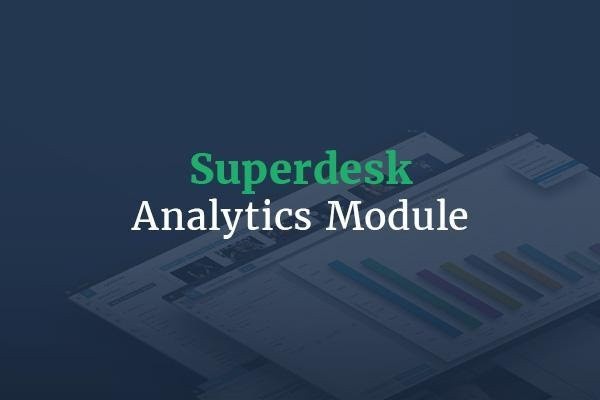
To keep tabs on productivity, newsroom managers need access to quality data. But although journalists have a growing list of tools with which to measure content performance and audience behaviors, they have far fewer ways to measure efficiency in the news creation process itself.
Most newsroom CMSs offer little help in this regard. Typically, if editors or publishers want to know details of the story-production workflow, they must call on overworked IT staffers, wait days for the data, and then sift through reams of output statistics to make sense of it all.
Aware of these shortcomings, Prague-based Sourcefabric, Europe's largest developer of open-source tools for journalists, partnered with the Australian Associated Press (AAP) to create an open-source headless CMS that builds workflow analytics directly into the platform. The result - the Superdesk Analytics Module - resurfaces the tiny bits of data assigned to content at every step of the content lifecycle. Rather than jettison production data at the end of publishing, a common CMS tactic, those bytes are saved and reused by the Analytics Module in in Superdesk.
"We set out to build an extensible core feature set for an analytics/reporting tool such that any Superdesk site could adapt and create their own reports as needed," says Michael Gourlay, an AAP technical analyst and partner on the project.
"Based on Elasticsearch and Highcharts, the tool was initially tasked with providing a portfolio of basic reports around production activity, workflows, and publishing. To extend the reporting timeframe, we subsequently created a dedicated back-end repository for analytics that can store rich content life-cycle data in perpetuity. With this pool of data there are virtually no limits to the report vectors available."
For example, with just a few clicks, the Analytics Module can surface data on desk activity, user performance, the number of corrections, or time spent producing a story. With these datasets, news managers can answer key questions about their internal operations, information that most newsroom software makes difficult to ascertain. For a major news agency like the AAP, insights range from whether the agency is meeting its contracted news-story quotas for clients to what are the peak production times on news desks and are they sufficiently staffed.
Average and maximum time to produce a story; November 2019.(Photo: Gregory Bruno)
Production data is only one element of operational decision-making; managers cannot evaluate efficiency with data alone. Nor is it possible to measure every piece of the news-making process. Simple questions - such as whether the reporter multitasked, took a coffee break, or was called to a more urgent story - are not captured in newsroom production metadata.
And yet, with so many newsrooms operating in the dark when it comes to measuring internal workflows, the Superdesk Analytics Module is clearly a valuable addition to the newsroom metrics puzzle.
Australian Associated Press hourly desk activity on December 4, 2019.(Photo: Gregory Bruno)
"This module was designed to shed light on newsroom productivity by utilizing internal data and presenting it in a way that news managers can digest and process," explains Sourcefabric project manager Karel Petrák. "Data is the raw material for operational decision-making, and with this module, newsroom managers can be better informed."
Need more insight into your newsroom processes? Visit www.superdesk.org/demo to request free Superdesk and Superdesk Analytics Module demos.
ⓒ 2025 TECHTIMES.com All rights reserved. Do not reproduce without permission.




